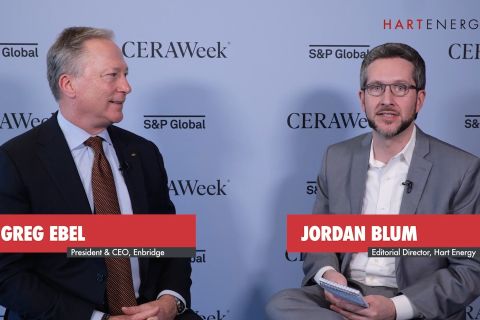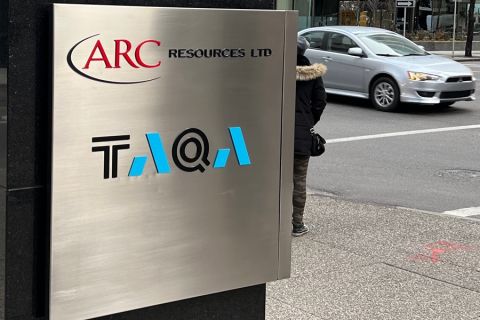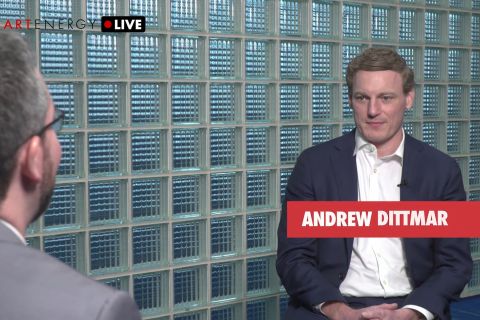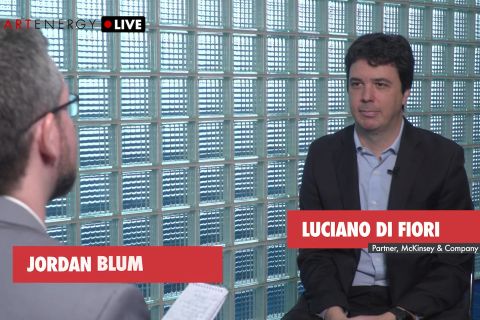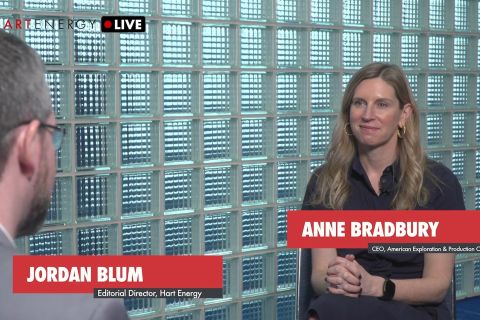Synopsis
Pressure pumping pricing appears to have bottomed in the Bakken. Service providers are reporting an average $54,000 per stage for well stimulation services, which is essentially the break-even cost for contractors. That price is down about 7% versus the first-quarter report, and about 35% from peak pricing. The current downturn has cut crew count in half and survey respondents estimate regional capacity at 750,000 hydraulic horsepower (HHP), which is about half the capacity identified in the first-quarter 2015 report on Bakken well stimulation. It will take $65 oil for activity to turn back up, according to survey respondents. In the meantime, operators have delayed completions on 50% of drilled wells. With current capacity and a backlog of about 1,000 drilled but uncompleted wells (DUC), it will take about a year to work through the inventory even if no new wells are added. Watch for the next Bakken well stimulation update in September 2015.
Part I. – Survey Findings
Among Survey Participants:
- Demand Stable but Slow
[See Question 1 on Statistical Review]
All respondents reported that demand through third-quarter 2015 for pressure pumping services will be slow, but stable in the Bakken Shale until the oil price recovers to $65 or more. Respondents expect that current demand is the “new normal” until a rebound occurs since 50% of Bakken fleets are now idled.- Mid-Tier Operator: “We have managed to keep three fleets busy in the play, but demand has remained the same QTQ resulting in laid-off fleets across the region. We believe there are less than 25 active fleets in the Bakken now.”
- HHP Oversupplied
[See Question 2 on Statistical Review]
Service providers reported that the pressure pumping HHP in the region remains oversupplied. A backlog of delayed completions, however, will lead to a shortage of fleets quickly when demand recovers on any future oil price rise.- Mid-Tier Service Provider: “There are about half of the active fleets at present and we are still oversupplied. We all see a scenario building where completing the backlog of wells will take almost a year without new wells being drilled.”
- HHP Capacity Estimated at 750,000 HHP
[See Question 3 on Statistical Review]
Respondents estimated there are less HHP remaining over the past 90 days, and crews have been laid off. Respondents estimated current capacity at about 750,000 HHP.- Mid-Tier Service Provider: “Demand has stabilized during the first half of 2015 as crews were laid off and fleets idled. We continue experiencing a slight oversupply in spite of the slowdown in fleets.”
- Well Metrics: Vertical Depth ~9,800-feet, Horizontal Laterals ~10,000-feet
[See Question 4 on Statistical Review]
Average vertical depth reported is 9,812 feet with an average of 10,000 feet of horizontal lateral. Average number of stages is 50 with plug and perf and 75 with sleeves. Injection rates average 61 barrels per minute (bpm) with about six stages completed daily on a 24-hour schedule and 25 bpm with 10 stages per day with sleeves. Average total HHP required to frack the Bakken formation is estimated at 22,000 HHP among respondents, same as the first quarter.
- Average Cost Per Stage in Bakken ~$54,000
[See Question 5a on the Statistical Review]
The average per stage price is $54,166 and is expected to remain the same during the next three months. There is a consensus among respondents that prices have hit the bottom.- Mid-Tier Service Provider: “Prices are at break even now. I don’t think prices can go lower and should start rising with any increase in oil price”
- Steady Prices Expected QTQ
[See Question 5b on the Statistical Review]
All respondents expect cost-per-stage prices to remain the same during the next three months unless the oil price improves. Respondents mentioned that prices are at the bottom and many are working to keep market share at this point.- Mid-Tier Service Provider: "We continue working to survive. We believe big three may be losing money to capture market share now.”
- Operator Strategies During Downturn
[See Question 6a and 6b on the Statistical Review]
Operators have focused mainly on price concessions from service providers and delaying completions to address low oil price concerns. Some respondents reported fewer operators are doing enhanced sand volumes and are using much less ceramic proppant. Many respondents reported half of all wells in Bakken are delaying completions, which is leading to a backlog of approximately 1000 wells.
End Survey Findings
Survey Demographics
H A R T E N E R G Y researchers completed interviews with eight industry participants in the well stimulation/pressure pumping service segment in the Bakken Shale area. Participants included one completions equipment supplier, and seven managers or sales personnel with well service companies. Interviews were conducted during late May 2015.
Part II. – Statistical Review
Well Stimulation/Pressure Pumping
[Bakken Shale]
Total Respondents = 8
[Completions Equipment Supplier = 1, Frack Service Providers = 7]
1. Do you expect demand for pressure pumping equipment to grow, remain the same or shrink in first-quarter 2015 compared to fourth-quarter 2014?
Stay the same: 8
2. Would you characterize the supply of pressure pumping equipment in your area as excessive, sufficient or insufficient to meet early 2015 demand?
Sufficient: 2
Oversupplied: 6
3. How would you estimate total HHP capacity for the region?
Avgerage total HHP among respondents 750,000 HHP*
*Respondents estimate there has been a 50% decrease since fourth-quarter 2014
4. What is the average vertical drilling depth, average horizontal lateral length, number of frack stages and injection rates (bpm) in this play? What are the average frack stages per day? Is this a 12-hour or 24-hour shift? How much HHP does it take to frack this formation?
Bakken Shale
Average Vertical Depth: 9,812-feet
Average Horizontal Lateral Length: 10,000-feet
Average Frack Stages: 50 (PP)/75 (coil)
Injection rates (barrels/min): 61 bpm (PP)/
25 bpm (coil)
Average No. of Frack Stages/Day: 6 (PP)/ 10 (coil)
12-hr or 24-hr 24-hr
HHP required to frack formation: 22,000 HHP
(same as 1Q2015)
5a. What is the average cost per stage in your area now?
$25,000-80,000: 8
Average cost per stage: $54,166 per stage
5b. Do you expect fracking prices to increase, remain the same, or decrease over the next three months?
Remain the same (0%): 8*
*Respondents agreed that prices are at the bottom.
6a. What strategies are companies putting into place to cope with a low price environment?
Slowed considerably already: 3
Slowdown has dropped service prices 15-20%: 5
6b. What are you seeing in terms of the number of wells drilled, but not completed?
At least half of completions delayed: 5
Too many: 2
Backlog of unfracked wells is near 1,000: 1
End Statistical Review
Recommended Reading
Exclusive: Renewables Won't Promise Affordable Security without NatGas
2024-03-25 - Greg Ebel, president and CEO of midstream company Enbridge, says renewables needs backing from natural gas to create a "nice foundation" for affordable and sustainable industrial growth, in this Hart Energy Exclusive interview.
ARC Resources Adds Ex-Chevron Gas Chief to Board, Tallies Divestments
2024-02-11 - Montney Shale producer ARC Resources aims to sign up to 25% of its 1.38 Bcf/d of gas output to long-term LNG contracts for higher-priced sales overseas.
Exclusive: Andrew Dittmar Expects Increased Public M&A in 2024
2024-02-15 - In this Hart Energy LIVE Exclusive, Andrew Dittmar, Enverus Intelligence's senior vice president, compares 2023 consolidation to what he expects in 2024, including more public to public deals.
Exclusive: Despite Uncertainty, NatGas Balances Out
2024-03-04 - McKinsey and Co.'s Luciano Di Fiori says the natural gas market is capable of balancing itself out—despite LNG permit approval pauses, midstream constraints and dependence on oil production—in this Hart Energy LIVE Exclusive interview with Editorial Director Jordan Blum.
Exclusive: Activists Sending 'Wrong Signal' on US LNG
2024-02-23 - Anne Bradbury, the CEO of the American Exploration & Production Council, says the Biden administration's pause on U.S. LNG export approvals sends a wrong message about the importance of LNG to the American economy and the climate, in this Hart Energy LIVE Exclusive interview.

